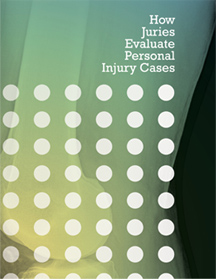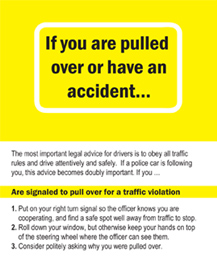Checklist of topics that may be covered during your slip and fall deposition
What is a deposition?
When you file a slip and fall lawsuit, the person or entity you sue (the “defendant”) will engage in a legal process called “discovery,” through which the defendant will try to learn as much as possible about you and your injury claims. One of the ways to do this is to take your deposition. A “deposition” is the defendant’s opportunity to interview you, under oath, about issues related to the slip and fall accident. Your personal injury attorney will be present to protect your interests, and a court reporter will make a verbatim record of everything that is said.
Slip and fall deposition checklist
Below is a checklist of topics that may be covered in your slip and fall deposition. Throughout this checklist, you (the person who filed the lawsuit) are referred to as the “plaintiff.” This checklist references a fall on a stairway, but the topics covered can be modified to apply to all slip and fall injury claims. These questions also could be used for the deposition of a witness to the accident.
1. Introductory questions
(a) Identification (name, address)
(b) Background (employment, education)
2. Date and time of slip and fall accident
3. Place of slip and fall accident
(a) Location (address)
(b) Interior/exterior of premises
(c) Location on premises (description)
4. Chronology of slip and fall accident
(a) Plaintiff’s arrival on premises
(b) Facts before the accident
(c) Facts during the accident
(d) Facts after the accident
5. Description of stairway
(a) Length of stairway
(b) Landings (existence, number, description)
(c) Number of steps
(d) Type of steps, description of steps
(e) Surface of steps
(f) Covering of steps
(g) Condition of stairway
(h) Age of stairway
(i) Lighting conditions
6. Description of handrail
(a) Length, height, diameter
(b) Material or composition
(c) Covering or surface
(d) Condition of handrail
(e) Age of handrail
7. Alternative routes of travel
(a) Description of alternatives
(b) Number of alternatives
(c) Plaintiff’s awareness of alternatives
(d) Feasibility of using alternatives
8. Proximate cause of slip and fall accident
(a) Foreign objects or substance (amount, color, visibility)
(b) Defect in design
(c) Defect in workmanship
(d) Handrail missing or defective
(e) Missing step
(f) Loose board
(g) Moisture/slippery conditions
(h) Loose covering on surface
(i) Lighting conditions (natural or artificial) (absent or defective)
9. Plaintiff’s conduct
(a) Description of plaintiff’s movement (direction and speed)
(b) Plaintiff’s use of handrail
(c) Plaintiff’s attention
(d) Any distractions
(e) Obstructions to plaintiff’s view
(f) Illness, loss of breath, dizziness
(g) Problems with footwear (age, condition, style, sole, loose shoelaces. high heels)
(h) Entry into unlighted or poorly lighted areas
10. Plaintiff’s awareness of defect or problem
(a) Prior times on premises
(b) Prior warnings to plaintiff (nature, substance, and who gave them)
(c) Open and obvious dangers
11. Witnesses’ statements to plaintiff
(a) Content
(b) Form (oral, written, recorded)
(c) When they were made
(d) By whom
(e) Custodian of written or recorded statements
12. Claimed injuries and damages resulting from slip and fall accident
(a) Nature of claimed injuries
(b) Treatment received
(c) Damages sustained (pain and suffering, loss of earnings/earning capacity, loss of consortium, medical expenses, etc.)
(d) Workers’ compensation claims



